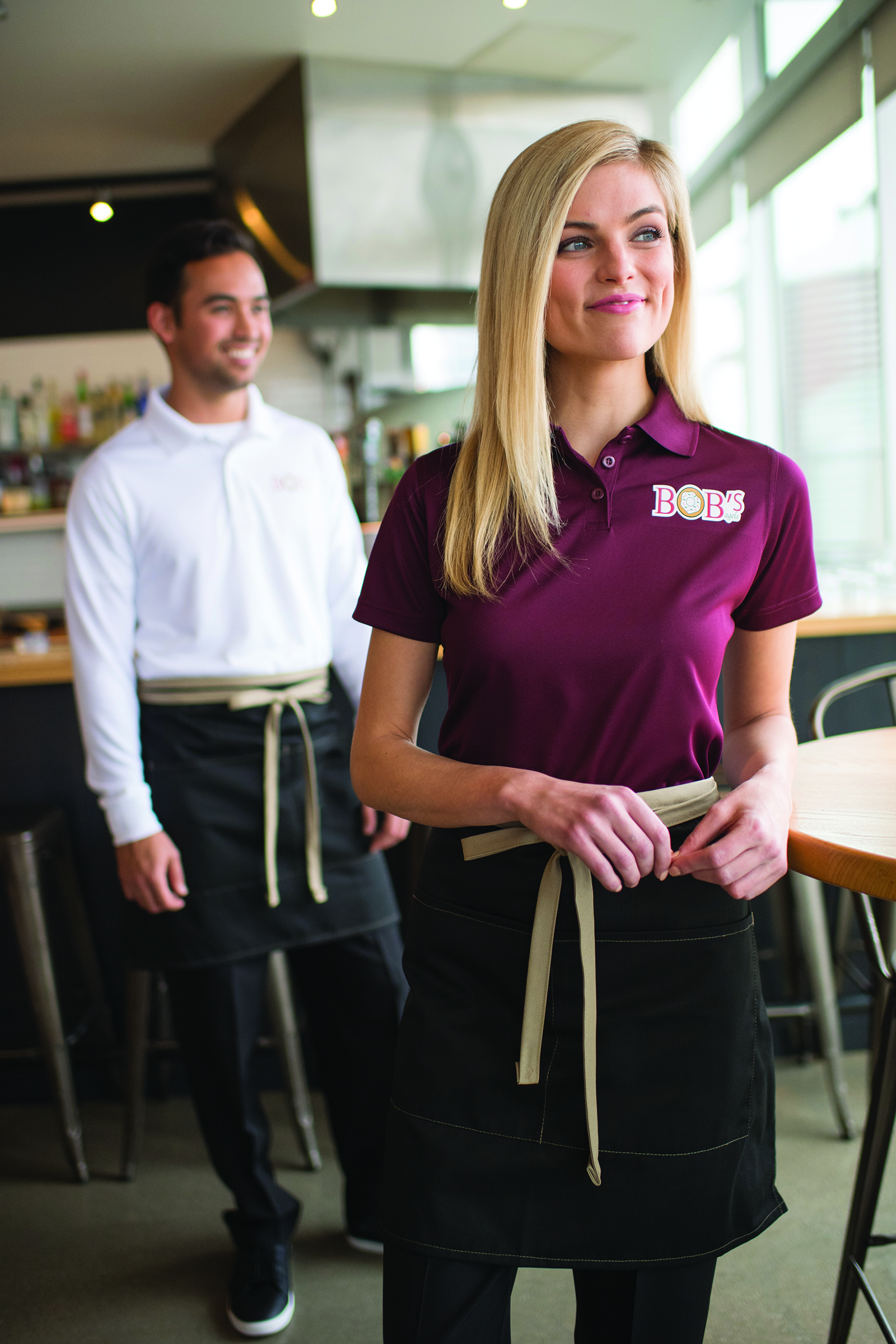Few promotional products consistently generate headlines like uniforms do. Every time a major airline rolls out a new look for pilots and flight attendants, Fashion Twitter starts buzzing. Patagonia went moderately viral earlier this year after BuzzFeed News reported it would no longer sell co-branded vests to certain startups in fintech (“finance bros,” as they’re better known). Minor League Baseball teams are locked in an escalating arms race to one-up their rivals with absurd (and hilarious) promotional uniform nights. Heck, there are entire websites dedicated to chronicling pro sports teams’ uniform moves.
This is all to say, uniforms are a big deal. And while your average uniform-buyer might not have the cultural cachet of a Delta Air Lines or Golden State Warriors—to say nothing of the budget—there’s enormous opportunity in this product category. For every NBA franchise, there’s a thousand local sports leagues. For every Starbucks, there’s a hundred small coffee shops. You get the idea. Businesses of all shapes and sizes need uniforms. And you’re going to provide them. Here are some things to keep in mind when you do.
What’s New in Promotional Uniforms?
Style trends in the uniforms category might not shift as rapidly as in other apparel categories (maybe because there’s less retail influence), but that’s all the more reason to stay ahead of the trends. For branding consistency, a customer might only update their uniform set once a decade, if that, so you don’t want to lock them in with something that’ll quickly be outdated.
Taraynn Lloyd, vice president of marketing for Edwards Garment, Kalamazoo, Mich., said that one of the big uniform trends right now is business casual looks that are easy to care for at home and can be dressed up with an added suit coat or sport jacket. That ties in with the emerging trend of flexibility in uniforms—giving businesses and wearers more options and combinations within the same uniform set. Lloyd described the concept as “wardrobe-building.”
“What this means is associates are offered multiple options to create their uniform apparel to build a wardrobe,” she said. “For example, if the associate needs a uniform that requires three tops, two pants, and a jacket or vest, they will purchase three different colors or styles for tops, two pants (perhaps casual and dress) and one suit coat or vest. As long as they select from the garments listed in their corporate uniform guidelines, then it is simple for them to create a wardrobe that makes them look great and feel engaged. Wardrobe building gives the wearer choices and makes the image of a uniform more appealing.”

Mary Hall, inside sales manager for ERB Industries Inc., Woodstock, Ga., has seen this trend as well, noting that it allows staff some individuality based on personal preferences, which goes a long way toward keeping them comfortable and happy on the job. As for actual style features, Hall pointed to urban chic looks incorporating lots of neutrals, grays and blacks, along with vests and V-neck aprons.
Lloyd said left chest pockets, softer fabrics and short-sleeve blouses with button closures (here, there’s some definite retail influence) are big trends in women’s uniforms, while performance features like stretch, stain-release and no-iron remain popular for both men and women. Hall agreed, pointing to moisture-wicking, rear venting and armholes or sleeves designed for added flexibility.
The performance aspect is particularly important. Service jobs where uniforms are required tend to be physically demanding. But even then, not all of those jobs are the same. Some may require different features to ensure staff are adequately equipped for work. Lloyd said this should be a major point of emphasis for distributors when working with customers on uniform programs.
“What the distributor should discuss with the client is the types of job roles and functions that require uniforms,” said Lloyd. “You want to make sure that what you suggest to the client works. For example, if you are a delivery driver, then the fit of the pant at the waistband, hip and thigh is extremely important. You want to make sure that they are comfortable sitting and moving all day without the pant binding at those critical areas. Taking that a step further, maybe they work in a warm climate and need to have a shirt that wicks moisture keeping them cool and comfortable. Ideally, the distributor needs to understand the job roles and what is expected of a uniform solution to insure that fabric features and garment fit meets expectations.”
Selling Ideas
So what’s the best way to sell uniforms? Well, there is no “best” way. Hall suggested seeking out new business in smaller but emerging markets like home DIY and crafters (painting classes, pottery, etc.) who need aprons and smocks. Lloyd, meanwhile, suggested pitching clients on uniforms or corporate apparel as a brand solution—a natural extension of their existing promotional products or branding strategy.
“Distributors should discuss with clients the advantages of uniforms for their staff,” she said. “That includes creating a first (and lasting) impression with customers, consistent imagery conveying quality products and services, an immediate connection between staff and customers, and a friendly environment that lets customers know staff is ready to assist them.”
Lloyd also advised highlighting the way uniforms can help brands stand out from the competition and engage employees. And while you’re (obviously) free to pitch uniforms to prospects or new customers, your best bet may be looking for new uniforms business with current customers.

Many times, that business is right under your nose. Lloyd described a scenario she saw firsthand, where a restaurant client asked a distributor it had already worked with on several items if they knew anyone who could provide staff uniforms. After a few conversations about budget, decoration requirements and the various job roles requiring the uniforms, the distributor landed the order, which Edwards Garment helped fulfill. In this case, the client asked. But it can’t hurt to start the conversation yourself.
“Working with clients who are familiar to the promotional products distributor makes it easier to begin the journey of developing a uniform program with them,” said Lloyd.
And, of course, it’s well known that uniforms have massive potential for repeat business. In service industries, staff turnover is high. Uniforms get beat up, spilled-on, worn down over time. Businesses will always need replacements. That’s good for distributors, but only if they’re able to properly service those programs. Uniforms customers need consistency in style, color, sizing and more, so find and work with suppliers who can meet those needs.
“Partnering with a supplier who specializes in aprons and uniforms helps make you an expert,” said Hall.
“Making sure that the distributor can order small quantities after the initial uniform program has begun is critical,” added Lloyd. “Edwards understands this and works with our distributor partners to ensure their uniform programs are successful.”



